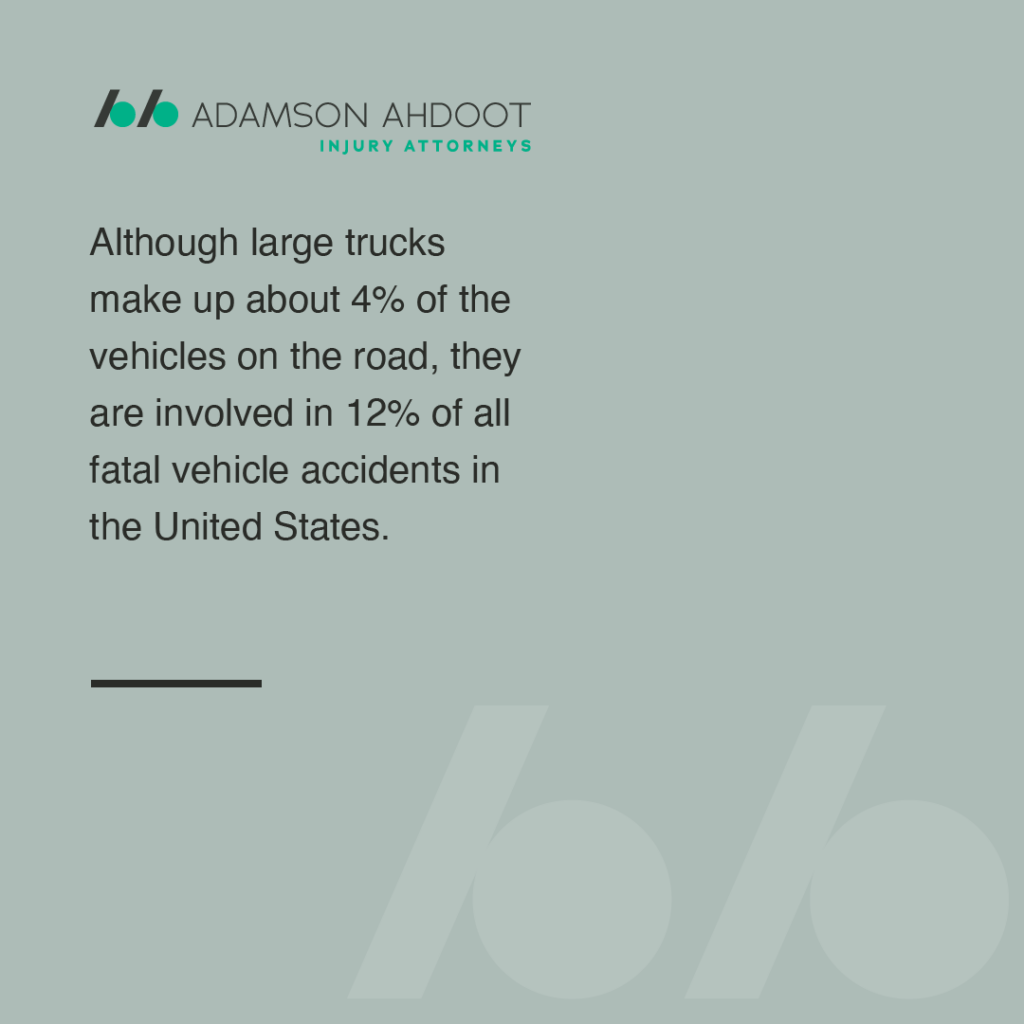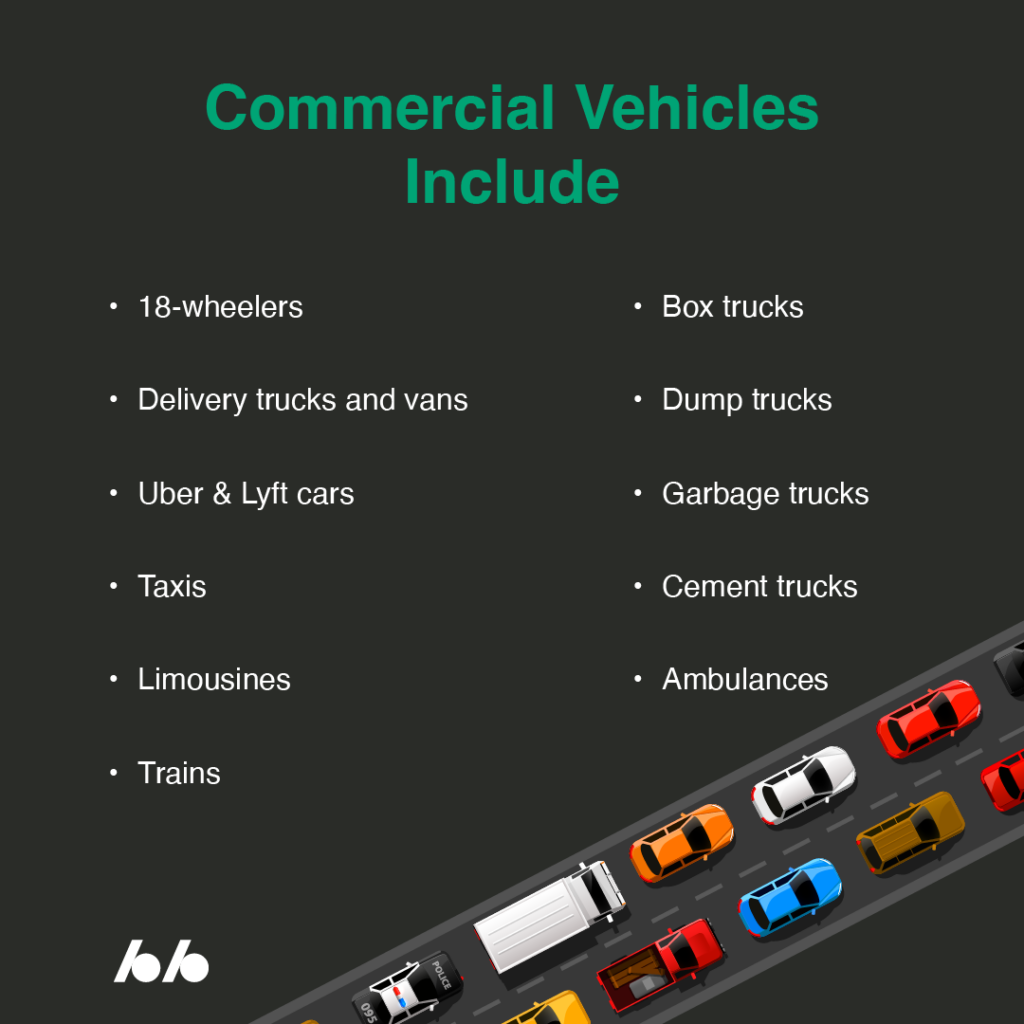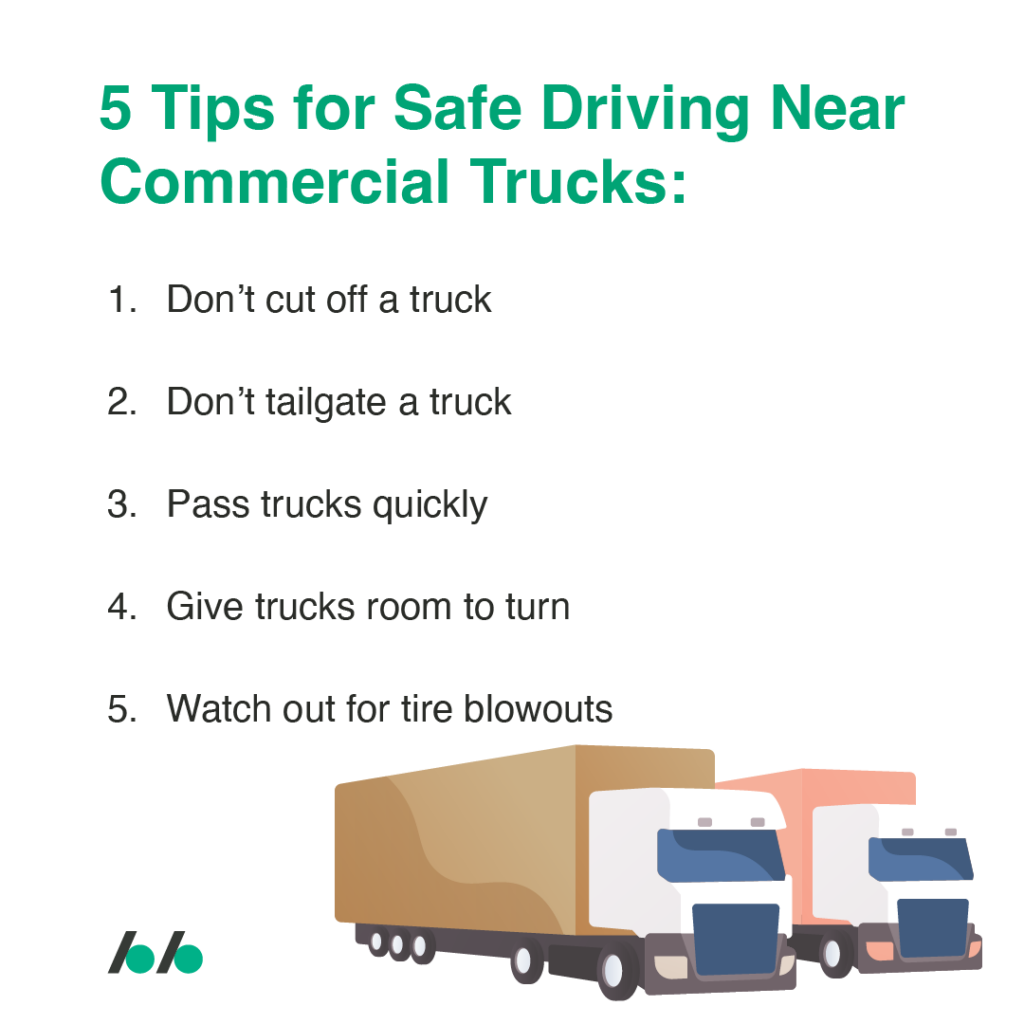Accidents involving commercial vehicles are far too common, particularly ones involving large trucks and buses. These types of accidents are extremely dangerous and often result in fatalities.
This guide will help you understand why commercial vehicle accidents are so dangerous and common. Additionally, by learning some tips for driving defensively around commercial vehicles, you can reduce the likelihood that you will be involved in this kind of accident.
Although large trucks make up only about 4% of the vehicles on the road, they are involved in 12% of all fatal vehicle accidents in the United States. Arizona in particular has one of the highest rates of fatal trucking accidents in the country. In 2020, there were 3,558 fatal crashes in Arizona . This was many times higher than almost every other state, with only Texas being comparable.

To start, while large trucks are only 4% of the vehicles on the road, they make up around 9% of the total miles traveled. That partially explains their involvement in a disproportionately large number of crashes, but there are other factors as well.
Since trucks spend so much time on the road, there is more wear and tear on parts, and they are more likely to encounter unsafe roads and weather conditions. The drivers of these trucks often work long hours, and driver fatigue also contributes to many accidents. In addition, many other drivers don’t know how to pass and merge around trucks, often creating dangerous situations.
The size and weight of large commercial vehicles mean that any accident is considerably more dangerous than it would be with a smaller vehicle. The weight causes a more forceful impact and much greater damage.
In addition, large vehicles are significantly less maneuverable, and it is much more difficult for the driver to avoid or lessen the severity of an accident with defensive driving techniques.
Commercial vehicles are broadly defined in Arizona. They include any vehicle that is used to transport people for hire or profit, and any vehicle primarily intended for the transportation of property. Semi-trucks are one of the most obvious examples, but there are many other types, including Uber cars, moving trucks, and garbage trucks.

Commercial vehicles are categorized based on the weight and size of the vehicle. The larger the vehicle, the more regulations, and rules there are regarding licensing and operation. For example, larger commercial trucks are required to stop at all weight and inspection stations they come across on their route. They are also required to follow specific hours of service laws.
To operate a commercial vehicle in Arizona, a driver must be at least 18 years old and must have a commercial vehicle license or CDL.
Three different levels of CDLs are required based on the size of the vehicle. The highest class of license is required for larger vehicles, as well as for any vehicle that carries hazardous materials or sixteen or more passengers.
Vehicles such as forklifts, rented Segways, ATVs, and bicycle-drawn trolley cars might appear to fit the definition of commercial vehicle, but they are not considered commercial vehicles under Arizona law. Commercial vehicles are limited to vehicles that are required to be registered as street-legal.
Both the Federal Motor Carrier Safety Administration and the Arizona Highway Patrol require that commercial vehicle drivers be held to specific safety and operating standards. The standards include mandatory driving record investigations by employers, annual inquiry and review of driving records and traffic law violations by employers, and regular medical examinations of drivers.
These higher standards for commercial vehicle drivers are necessary because of the skill and attention required to drive these vehicles, and because of the increased danger, these large vehicles pose to other drivers on the road.
Any accident involving a large commercial vehicle is likely to be very serious, and you must take extra safety precautions when driving near a semi-truck and other similar vehicles. Although the driver of a commercial vehicle is responsible for driving their vehicle safely, you are also responsible for driving safely and defensively while near them.
Any accident involving a large commercial vehicle is likely to be very serious, and you must take extra safety precautions when driving near a semi-truck and other similar vehicles.
By following some simple safety tips, you can lessen the chance of a serious accident with a commercial truck.

Large trucks are much heavier than typical passenger vehicles. The increase in weight means that it takes trucks much longer to slow and stop. If you merge into a lane directly in front of a commercial vehicle (or are simply driving with a commercial vehicle close behind you) and are forced to brake suddenly, the commercial vehicle will slow down much more slowly than your car and is very likely to rear-end you.
There are several reasons why driving too closely behind a commercial vehicle is a bad idea. For one, debris can fall off a commercial vehicle and hit your windshield. But, more importantly, if you were to rear-end a large vehicle, the impact to your car is likely to be at the level of your windshield rather than your bumper, making the crash far more likely to be fatal.
Commercial vehicles have multiple blind spots, behind and on the sides. It’s safest for you to simply pass a commercial vehicle quickly and not linger in a potential blind spot.
Large vehicles cannot turn in the same tight arc that most passenger cars can. They are often forced to use multiple lanes to execute a turn. To be safe, you should leave extra room around a commercial vehicle at an intersection, as well as near the lane it will be turning into.
Tire blowouts are very common for 18-wheelers. The heavy rubber that flies off the truck’s tire can strike your car, and the truck may swerve during a blowout. You should always keep a close eye on a commercial vehicle, give them extra space, and be prepared to react in case of a blowout.
The procedure after a commercial vehicle accident is the same as any other car crash, except that you should obtain some additional information.
If you are injured, you should of course focus on getting treatment if necessary. If you are healthy enough, try to obtain the driver’s name, contact information, and insurance information, just as you would after any other accident. Additionally, try to get the name of the trucking company or their employer as well. Other than that, do not discuss the accident with the driver.
The procedure after a commercial vehicle accident is the same as any other car crash, except that you should obtain some additional information.
If you or someone you love has been injured or killed in a commercial vehicle or semi-truck accident, the accident attorneys at Top’s Injury Law Group PLLC may be able to help.
By learning about commercial vehicles and commercial trucks and how to drive defensively around them, you can lessen the chance of a serious commercial vehicle or semi-truck accident. But if the worst should happen, don’t wait to contact or call the experienced attorneys at Top’s Injury Law Group at (480) 470-2299. We can help guide your next steps with no money out of pocket and a no-cost, no-obligation consultation.